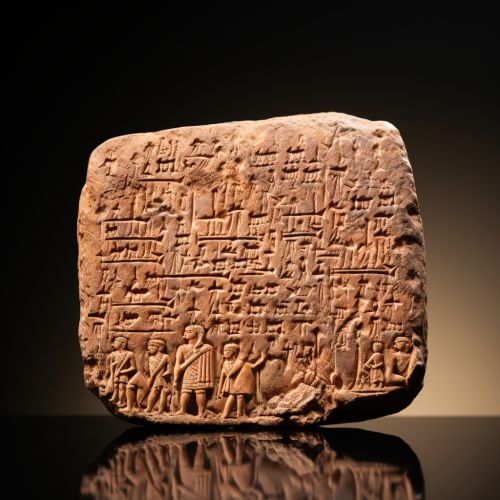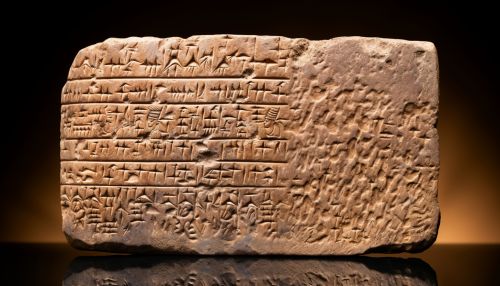Akkadian literature
Origins and Development
The origins of Akkadian literature can be traced back to the ancient Near East, specifically in the region of Mesopotamia. The Akkadian language, a Semitic language, was the lingua franca of the region for many centuries, and it was during this period that a rich body of literature was developed. This literature, written in cuneiform script on clay tablets, provides a unique insight into the society, culture, and beliefs of the Akkadian people.


The development of Akkadian literature was closely tied to the political and cultural changes in Mesopotamia. The Akkadian Empire, established by Sargon of Akkad in the 24th century BC, was a significant factor in the spread of the Akkadian language and the growth of literature in this language. The empire's influence extended over a large area, encompassing various cultures and languages, which contributed to the richness and diversity of Akkadian literature.
Literary Genres
Akkadian literature encompasses a wide range of genres, reflecting the complexity and diversity of Akkadian society. These genres include epic poetry, hymns, lamentations, law codes, and wisdom literature.
Epic Poetry
One of the most significant genres in Akkadian literature is epic poetry. The most famous example of this genre is the "Epic of Gilgamesh", which is considered one of the earliest great works of literature. The epic, which tells the story of the hero Gilgamesh and his quest for immortality, explores themes such as friendship, mortality, and the human condition.
Hymns and Lamentations
Hymns and lamentations were another important genre in Akkadian literature. These were often religious in nature, praising the gods or expressing sorrow for the loss of a temple or city. The "Lament for Ur" is a notable example of this genre, expressing the grief and despair felt by the people of Ur after the city's fall.
Law Codes
Law codes were a significant part of Akkadian literature. The most famous of these is the Code of Hammurabi, one of the oldest deciphered writings of significant length in the world. The code consists of 282 laws, with scaled punishments, adjusting "an eye for an eye, a tooth for a tooth" (lex talionis) as graded depending on social status, of slave versus free, man or woman.
Wisdom Literature
Wisdom literature was another important genre in Akkadian literature. This genre included texts that offered moral and practical advice, often in the form of proverbs or fables. The "Instructions of Shuruppak" is a notable example of Akkadian wisdom literature.
Influence and Legacy
Akkadian literature had a profound influence on the literature of later cultures in the Near East. Many of the themes, genres, and literary techniques developed by the Akkadians were adopted and adapted by later civilizations, including the Babylonians, Assyrians, and Persians.
The influence of Akkadian literature can also be seen in the Hebrew Bible, which shares many similarities with Akkadian texts. For example, the biblical story of Noah and the flood has many parallels with the flood story in the "Epic of Gilgamesh".
In addition to its influence on other cultures, Akkadian literature has also had a lasting impact on our understanding of the ancient Near East. The texts provide a valuable source of information about the society, culture, and beliefs of the Akkadians and other ancient Mesopotamian civilizations.
